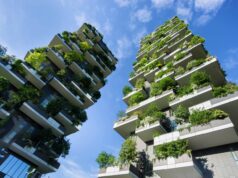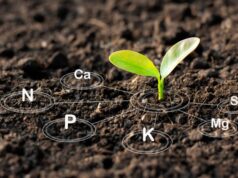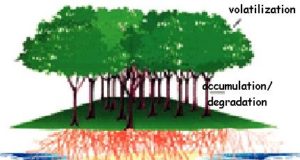I. Introduction
Vertical farming is a method of growing crops in vertically stacked layers using controlled environments. The purpose of this blog post is to explore the advantages and disadvantages of this innovative agricultural practice.
II. The Vertical Farming Process
The vertical farming process involves designing and constructing a vertical farm, selecting crops that are compatible with the vertical growing system, and implementing environmental control and monitoring systems.
Designing and constructing a vertical farm typically involves the use of high-tech materials such as LED lighting, hydroponic systems, and automated control systems. The goal is to optimize space usage and create an efficient growing environment that maximizes crop yields.
III. Advantages of Vertical Farming
There are several advantages to vertical farming. First, it allows for increased crop yields compared to traditional farming methods. Because crops are grown in a controlled environment, it’s possible to optimize growing conditions and minimize the risk of pests and diseases.
Second, vertical farming is an efficient use of space and resources. By growing crops in vertical layers, farmers can produce more food per square foot of land than with traditional farming methods. This is particularly important in urban areas, where land is scarce.
Third, vertical farming has the potential to reduce the environmental impact of agriculture. By using LED lighting and hydroponic systems, vertical farms can significantly reduce water usage and eliminate the need for harmful pesticides.
IV. Disadvantages of Vertical Farming
Despite the advantages, there are also some disadvantages to vertical farming. One of the biggest challenges is the high initial investment costs. Building and maintaining a vertical farm requires significant financial resources, and the cost of energy and labor can also be high.
Second, energy consumption is a major concern for vertical farming. The use of LED lighting and environmental control systems requires a lot of electricity, which can be expensive and contribute to climate change.
Finally, vertical farming is limited in terms of crop diversity and productivity. While some crops, such as lettuce and herbs, are well-suited for vertical farming, others are not. This can limit the profitability of vertical farming and restrict its potential impact.
V. Examples of Vertical Farming
There are several examples of successful vertical farming operations around the world. For example, AeroFarms is a vertical farm in Newark, New Jersey that produces 2 million pounds of greens per year using a vertical growing system. Another example is Plenty, a vertical farm in San Francisco that grows a variety of crops using hydroponic systems.
VI. Future of Vertical Farming
The future of vertical farming is promising. As technology continues to evolve, it’s likely that the cost of building and maintaining vertical farms will decrease, making it more accessible to farmers. Additionally, the use of automation and robotics could make vertical farming even more efficient and cost-effective.
However, there are also challenges that need to be addressed. For example, vertical farming may face regulatory hurdles, as it’s a relatively new practice that hasn’t yet been widely adopted. Additionally, there are concerns about the long-term sustainability of vertical farming, particularly in terms of energy usage.
VII. Conclusion
In conclusion, vertical farming is an innovative agricultural practice that has the potential to revolutionize the way we grow food. While there are both advantages and disadvantages to vertical farming, it’s clear that this is a field with significant potential for growth and innovation. By continuing to invest in and refine this technology, we can create a more sustainable and efficient food system for future generations.







